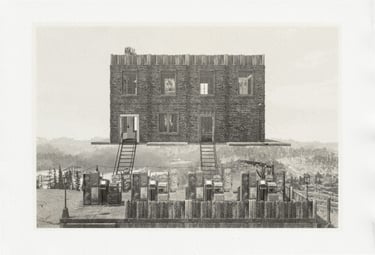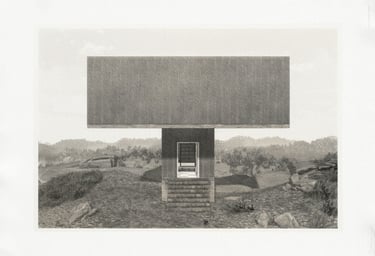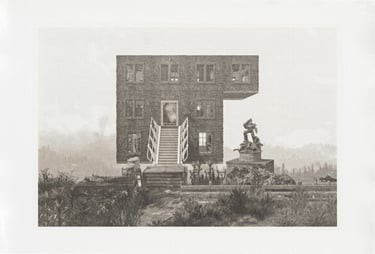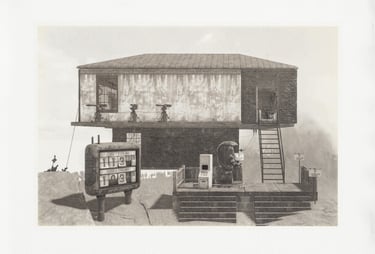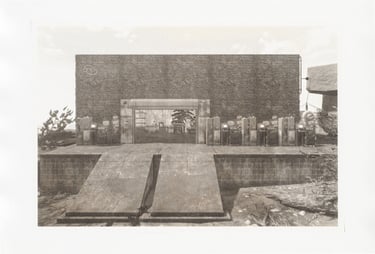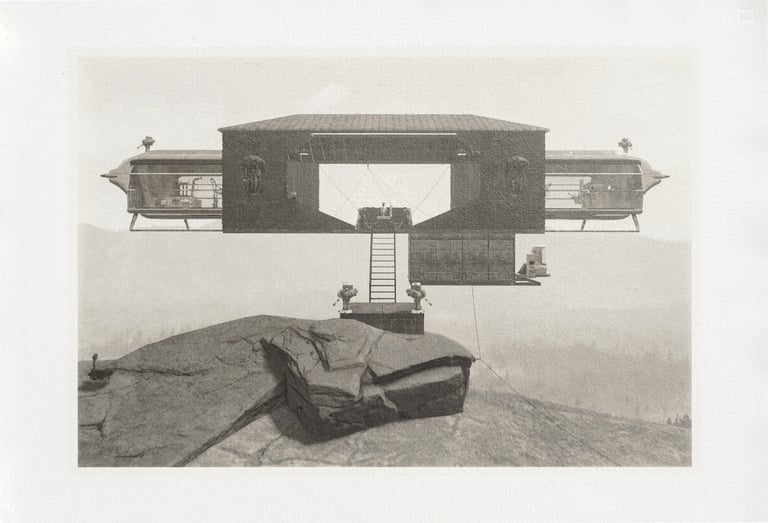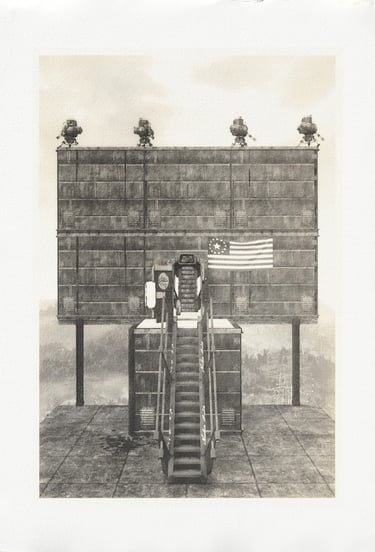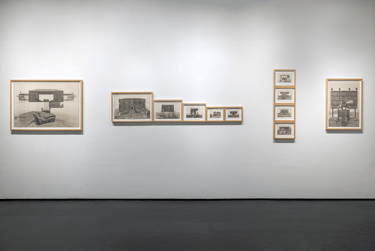Type 1.5.11.
2021
Virtual Photography
Kallitype
30 × 45 cm / 50 × 75 cm / exhibition version
Type 1.5.11. is set in the multiplayer post-apocalyptic world of Fallout 76 and focuses on player-built bases (C.A.M.P.s), decorated with cosmetic items purchased within a “game as a service” economy. By photographing and classifying more than two thousand of these structures into five types, the project treats virtual dwellings as microcosms of real social orders. The final kallitype prints translate these digital architectures into tangible photographic objects.
Type 1.5.11. is a conceptual photographic series by Maxim Zmeyev, created inside the multiplayer post-apocalyptic online game Fallout 76 (MMO Action RPG). Players emerge from an underground nuclear vault after atomic war and try to survive, rebuild habitats and negotiate relationships – including with one another. Alongside quests, character progression, crafting and combat, the game offers an optional system of personal bases (C.A.M.P.s). Tied to a “game as a service” model, an in-game shop sells purely cosmetic items for decorating these bases in exchange for currency purchased with real money. What begins as a secondary feature becomes a space of free-form architecture, where personal bases turn into expressions of players’ roles, values and behaviour.
Inspired by the typological catalogues of Bernd and Hilla Becher, the artist uses the in-game camera to document the façades of player-built shelters and bases. Each C.A.M.P. is photographed frontally, as a neutral elevation, repeating the same distance and angle. More than two thousand personal bases were recorded, revealing patterns of interaction shaped by architecture, available resources and functional choices.
Drawing on methods of classification from Plato’s Republic to contemporary sociology – in particular Luc Boltanski and Laurent Thévenot’s book On Justification: Economies of Worth – the project explores how virtual constructions reproduce real “worlds of justification.” Player roles such as guardians, merchants, farmers, artisans and philosophers echo social structures in which status, usefulness and moral legitimacy must constantly be argued and defended.
These virtual habitats operate as microcosms of actual societies, structured by utility, hierarchy and symbolic codes. Zmeyev distinguishes five main types – Guardians (security / military), Merchants (trade), Farmers (ecology / production), Artisans (craft) and Philosophers (ascetic, reflective) – presented in a research diagram. In this layout the height of each photograph corresponds to the proportion of that type within the observed population, turning the series into both typology and statistical graph.
The final works are printed as kallitypes, a historical photographic process patented in 1889 by chemist William Walker James Nicol. Based on iron salts, oxalic acid and silver nitrate, kallitype requires contact printing, long exposure and careful manual processing. The slow, material procedure contrasts with the instant, immaterial nature of in-game screenshots, giving these digital architectures the weight and fragility of archival objects.
In these digital dwellings, the player’s appearance, age or origin remain unknown, yet their social logic becomes visible. Under the cover of anonymity, hierarchies, strategies of survival and ideas of “good” dwelling are replayed. Type 1.5.11. traces the evolving relationship between individuals and their habitats – from Roman notions of property as ancestral space and house of the family, to contemporary forms of “home” within virtual worlds, where a base becomes at once an interface, an avatar and a social statement.



